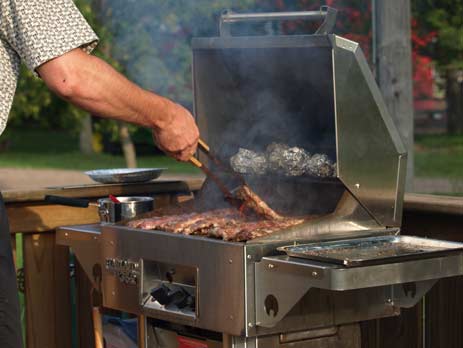 Gas Grilling
Gas GrillingGas-fired grilling has the clear benefit of being extremely convenient. Simply turn a knob, and say hello to your highly adjustable heat source. Gas grills are fueled by liquid propane stored in refillable tanks.
Gas grilling is clean and quick. There's no messing with briquettes, no stacking, no lighting, no smelly starter fluid and no waiting around for the coals to glow. And once dinner is over, there's no ashy mess to clean up. Return the switch to off, rub a metal brush over the grate and clean-up time is over.
On the technical side, gas burns clean, but it doesn't impart much flavor to grilled foods.
Charcoal Grilling
Charcoal grilling might not offer the same level of convenience as gas, but it does boast one benefit that stands out above all others: smoke flavor. The dry, white-hot heat of charcoal sears meat quickly, creating a crusty, caramelized exterior and smoky flavor.
Of course, charcoal grilling requires more time and attention than gas, from building and lighting the briquettes to waiting for the coals to get hot to managing the flame. Since you can't dial down the heat of white-hot coals, it's a good strategy to leave empty spaces on the lower grill grate (areas without briquettes). These cool spaces allow for better control, letting you sear food first over the hot spots before transferring it to cooler parts to finish cooking.
Charcoal grills are also less expensive than gas grills, though the cost of charcoal will add up over the years. Charcoal is also more portable than gas grills. A bag of charcoal can easily be chucked into the car and taken to the park or beach.
And let's face it--charcoal also involves an enticing element of danger. Playing with fire is fun. (Of course, this can be a plus or minus, depending on who's behind the flame.)

No comments:
Post a Comment